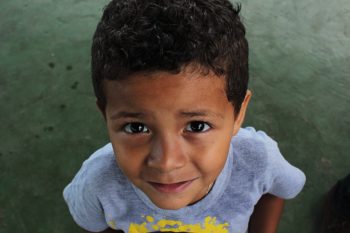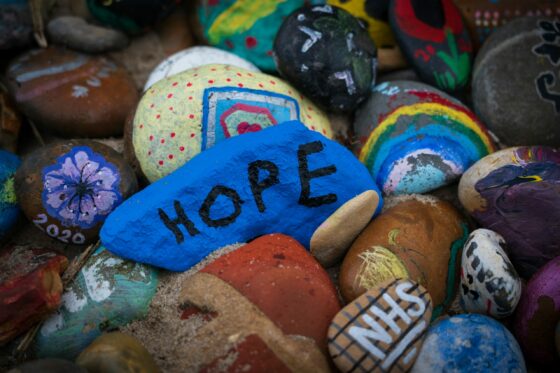 In my fifth grade classroom during the peak COVID era—a hugless year of masks, social distancing and hand sanitizer, I had a student named Chloe (watch her video here) who ended every one of her imagine stories with the same two words, “Imagine Hope!” At the time I found those words catchy and inspiring–and so did my class. In fact, eventually everyone ended their Imagine stories with “Imagine Hope!”, and it became our class motto. Quite fitting for that specific year.
In my fifth grade classroom during the peak COVID era—a hugless year of masks, social distancing and hand sanitizer, I had a student named Chloe (watch her video here) who ended every one of her imagine stories with the same two words, “Imagine Hope!” At the time I found those words catchy and inspiring–and so did my class. In fact, eventually everyone ended their Imagine stories with “Imagine Hope!”, and it became our class motto. Quite fitting for that specific year.
Why is hope important:
Hope is a word that gets used a lot but may not be understood as well as it needs to be.
I love this quote from Brene’ Brown’s book, The Gifts of Imperfection: Let Go of Who You Think You’re Supposed to Be and Embrace Who You Are (I also really love this entire book)!
“Hope is not an emotion; it’s a way of thinking or a cognitive process. Emotions play a supporting role, but hope is really a thought process made up of… a trilogy of goals, pathways, and agency. In very simple terms, hope happens when…
We have the ability to set realistic goals (I know where I want to go).
We are able to figure out how to achieve those goals, including the ability to stay flexible and develop alternative routes (I know how to get there, I’m persistent, and I can tolerate disappointment and try again).
We believe in ourselves (I can do this!).”
This explains why Chloe’s intuitive “Imagine Hope!” was so inspirational to my students. Hope leads to action. In The Imagine Project writing process, the writer is asked to write about a difficult time in life to help with emotional expression and processing—using the word Imagine to begin every sentence. Then in step 4, the writer is asked to write how they would like their story to end (also using the word Imagine), encouraging the writer to take a hopeful turn.
To better understand what hope is, let’s first understand what hope isn’t:
Hope isn’t positive thinking. Too often positive thinking is used to avoid the uncomfortable emotions in life and can be wielded like a weapon by people who just want to avoid discomfort. Comments like, “Look on the bright side!” or “Just think positive!” can lead to the suppression of genuine emotions that need to be expressed. The Imagine Project leads with acknowledging the discomfort of life so that people can feel, see, and hear right where they are. Instead of only positive thinking, the writer is asked to imagine their story taking a hopeful turn, it invites the writer and the listener to imagine a different future for themselves, and then to take steps forward to move toward that hopeful future while accepting the difficult present.
Psychologist Dr. Andrea Bonoir wrote about the health benefits of hope in an article for Psychology Today, In it she writes “We feel less helpless and less uncertain about the future (and helplessness and uncertainty both increase our stress, in ways that can be detrimental to our health over time). Increased hope also gives us a buffer in order to sustain some setbacks: it can help with our resilience when there are bumps in the road, helping us have the energy to continue on the path that we are on before giving up.”
In addition, Laura King, a researcher from the University of Missouri Department of Psychological Sciences, did a study on the health benefits of writing about life goals, and she discovered that, “Five months after writing, a significant interaction emerged such that writing about trauma, one’s best possible self, or both were associated with decreased illness compared with controls. Examining the most hopeful aspects of our lives through writing—our best imagined futures, our “most cherished self-wishes” (Allport, 1961)—might also bestow on us the benefits of writing that have been long assumed to be tied only to our traumatic histories.”
We encourage you to write your imagine story (click here for the free journal), when you get to the end of your imagine story, try framing the ending around a “hopeful turn.” Sometimes people really struggle coming up with ideas for a hopeful ending to their imagine stories, especially students. To assist with this, we have been given generous permission by Bret Stein, the creator of The Feelings Wheel (download it here). It is an integral part of the Center for Nonviolent Communication and now we are using it to help people identify feelings that can help drive their imagine stories.
Here is how it works:
The wheel is divided into twelve core emotions, six of which we feel when our needs are not being met, and six of which we feel when our needs are being met. The feelings are organized by color with opposites directly across from each other. After writing your imagine story focused on the feelings you have when your needs are not being met, find the “hopeful turn” by identifying the opposite emotion you hope to feel directly across the wheel and then write what you imagine happening to experience that feeling.
It is my hope that you and your students will experience the power of The Imagine Project and the “hopeful turn” and that it will lead to goal setting, resiliency, and agency. Download the free journals here to get started!
Imagine Hope!
Written by Todd Daubert, Educational Consultant, The Imagine Project, Inc.

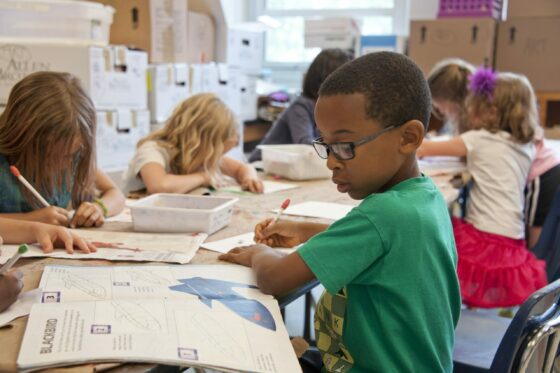 It’s back to school time again and most educators are acutely aware of the potential social emotional needs of students. Last school year was a challenging year for many teachers. Anxiety, social insecurities, inability to focus, distractions coming from many angles were worse than prepandenmic times. How can teachers give students the opportunity to stay present, grounded, feel accepted, and focus on learning? One simple and free way is by using
It’s back to school time again and most educators are acutely aware of the potential social emotional needs of students. Last school year was a challenging year for many teachers. Anxiety, social insecurities, inability to focus, distractions coming from many angles were worse than prepandenmic times. How can teachers give students the opportunity to stay present, grounded, feel accepted, and focus on learning? One simple and free way is by using 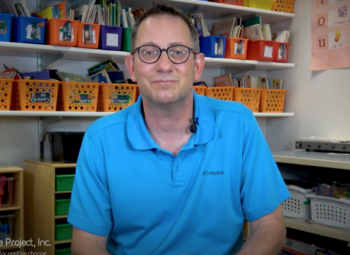 It’s back to school time 2021 style and it’s just plain stressful for students, teachers, parents, and admin. The reasons are obvious and endless. I feel for all of those dealing with these unique and yet common stressors in schools.
It’s back to school time 2021 style and it’s just plain stressful for students, teachers, parents, and admin. The reasons are obvious and endless. I feel for all of those dealing with these unique and yet common stressors in schools. The Imagine Project became a nonprofit a little over 5 years ago. We have grown tremendously in those 5 years, currently reaching over a quarter of a million kids! The journey of starting a nonprofit is always a challenging one with many obstacles and lessons, and we have survived and thrived! The lessons of business are expected, but the powerful lessons of life that the thousands of stories we’ve heard that go far beyond what we had expected. I’d love to share what we’ve learned.
The Imagine Project became a nonprofit a little over 5 years ago. We have grown tremendously in those 5 years, currently reaching over a quarter of a million kids! The journey of starting a nonprofit is always a challenging one with many obstacles and lessons, and we have survived and thrived! The lessons of business are expected, but the powerful lessons of life that the thousands of stories we’ve heard that go far beyond what we had expected. I’d love to share what we’ve learned. Every parent wants the best for their children. We work hard at making sure they eat right, do well in school, get enough sleep, etc. Another area that needs a great deal of focus is their emotional wellness. Emotional wellness means a child is able to express emotion, feel empathy and compassion, have health relationships, communicate freely, be responsible, accept help, have fun and feel joy, and be able to bounce back when they face adversity. Emotional wellness is key to being resilient in the face of any adversity. And since adversity is an integral part of life, we can’t really shield our children from it. Instead, we can promote emotional wellness and resilience by giving them tools to cope—lasting tools that can equip them to weather all the storms they encounter throughout their lives. Here are seven tips to help you help you help your child be their best self emotionally.
Every parent wants the best for their children. We work hard at making sure they eat right, do well in school, get enough sleep, etc. Another area that needs a great deal of focus is their emotional wellness. Emotional wellness means a child is able to express emotion, feel empathy and compassion, have health relationships, communicate freely, be responsible, accept help, have fun and feel joy, and be able to bounce back when they face adversity. Emotional wellness is key to being resilient in the face of any adversity. And since adversity is an integral part of life, we can’t really shield our children from it. Instead, we can promote emotional wellness and resilience by giving them tools to cope—lasting tools that can equip them to weather all the storms they encounter throughout their lives. Here are seven tips to help you help you help your child be their best self emotionally. As parents and teachers we often see our kids struggling with issues that challenge their ability to cope. It may be keeping up in school, coping with friendship changes, or the trials of social media. We are always looking for tools to support our precious children (and ourselves).
As parents and teachers we often see our kids struggling with issues that challenge their ability to cope. It may be keeping up in school, coping with friendship changes, or the trials of social media. We are always looking for tools to support our precious children (and ourselves). 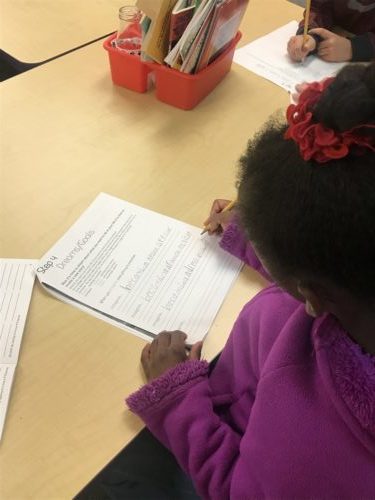
 Sadly, anyone with a child, friend, or relative in a school today worries if they will be safe. Unfortunately, the fear of a student being hurt by gun violence has become very real and prevalent. After picking ourselves up from yet another school shooting we have to seriously look at what we can do to help dissolve this horrific issue.
Sadly, anyone with a child, friend, or relative in a school today worries if they will be safe. Unfortunately, the fear of a student being hurt by gun violence has become very real and prevalent. After picking ourselves up from yet another school shooting we have to seriously look at what we can do to help dissolve this horrific issue.